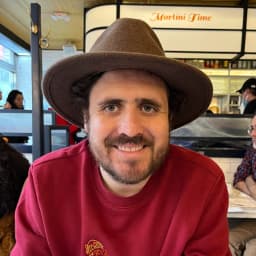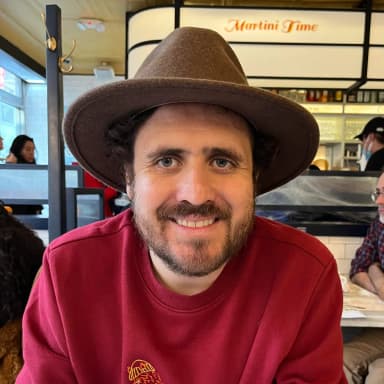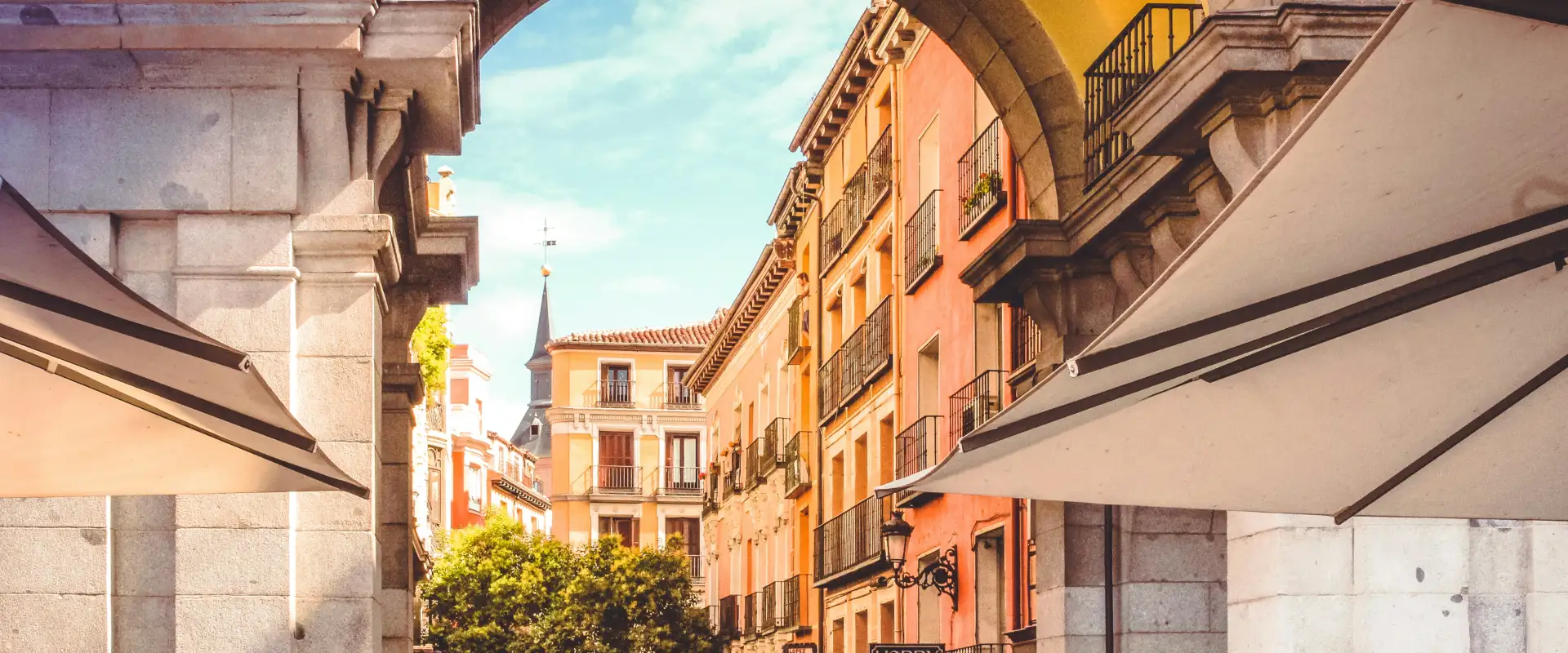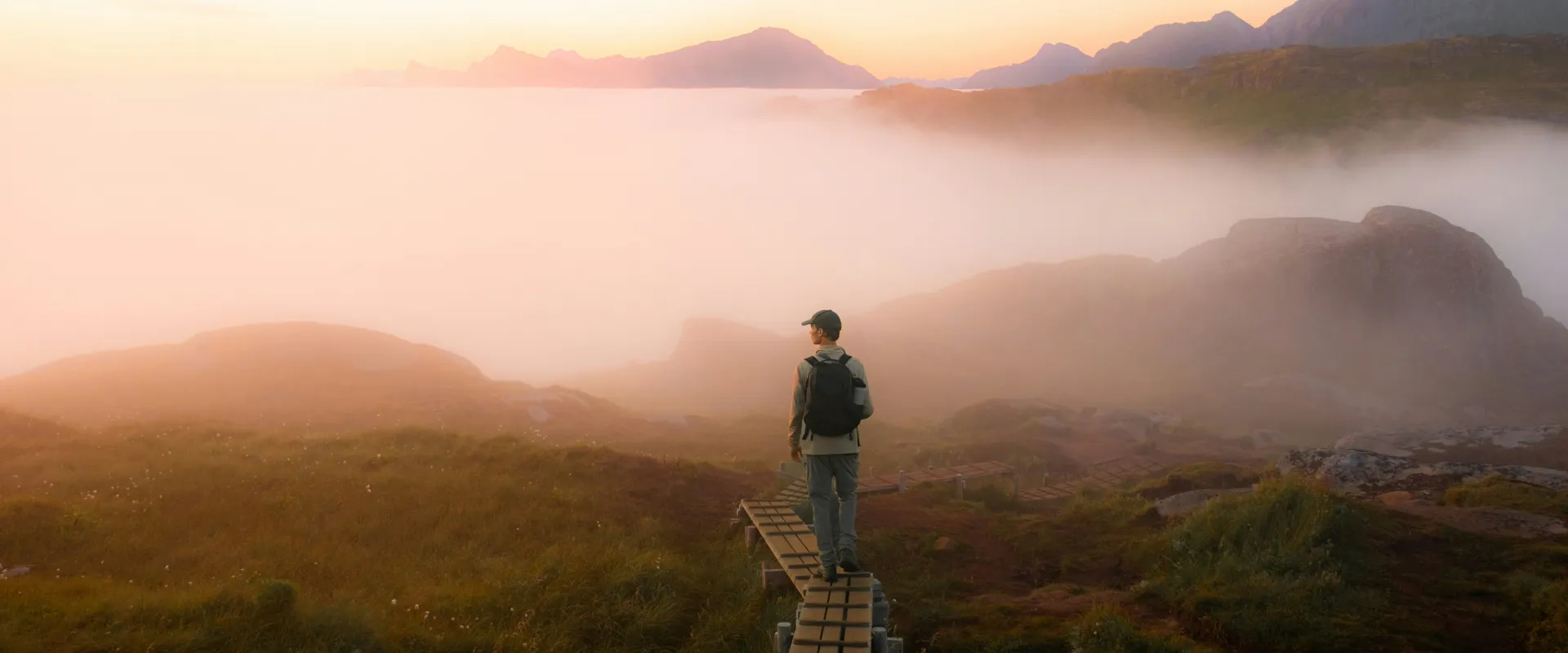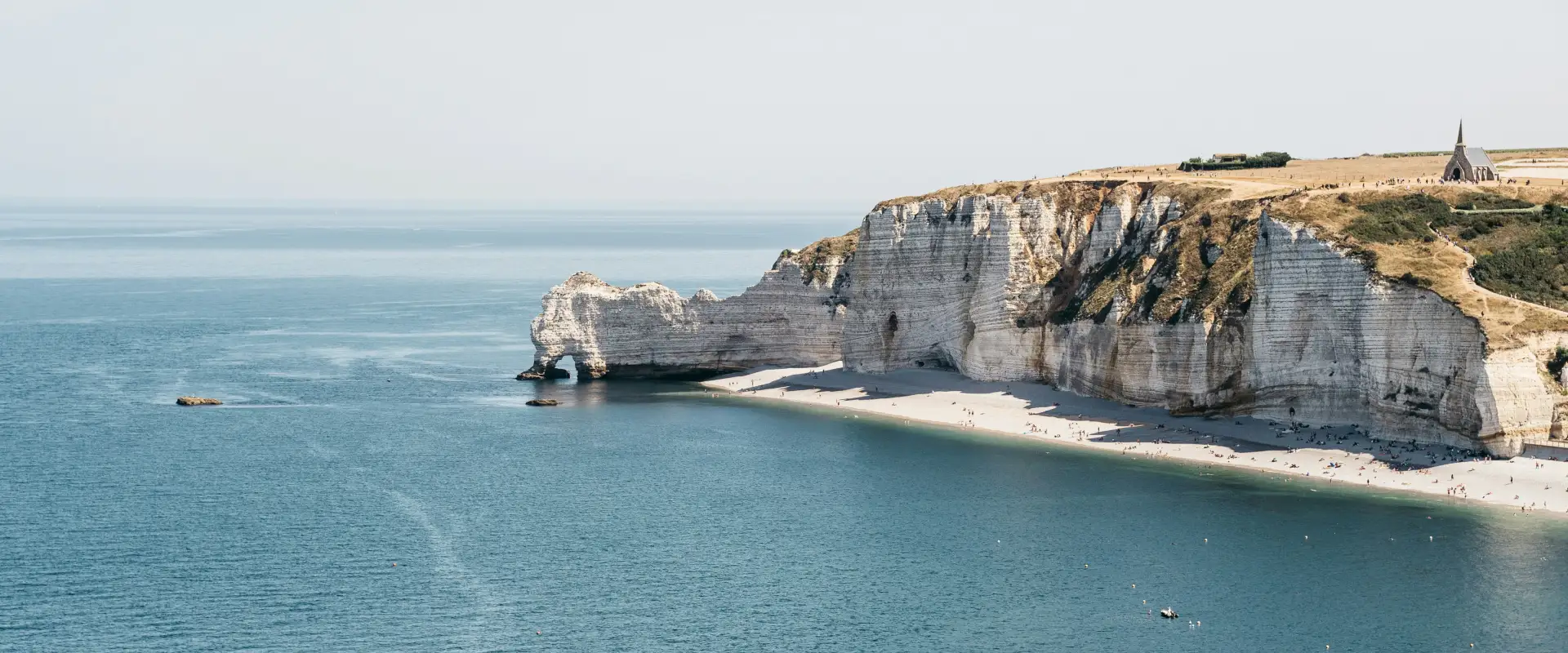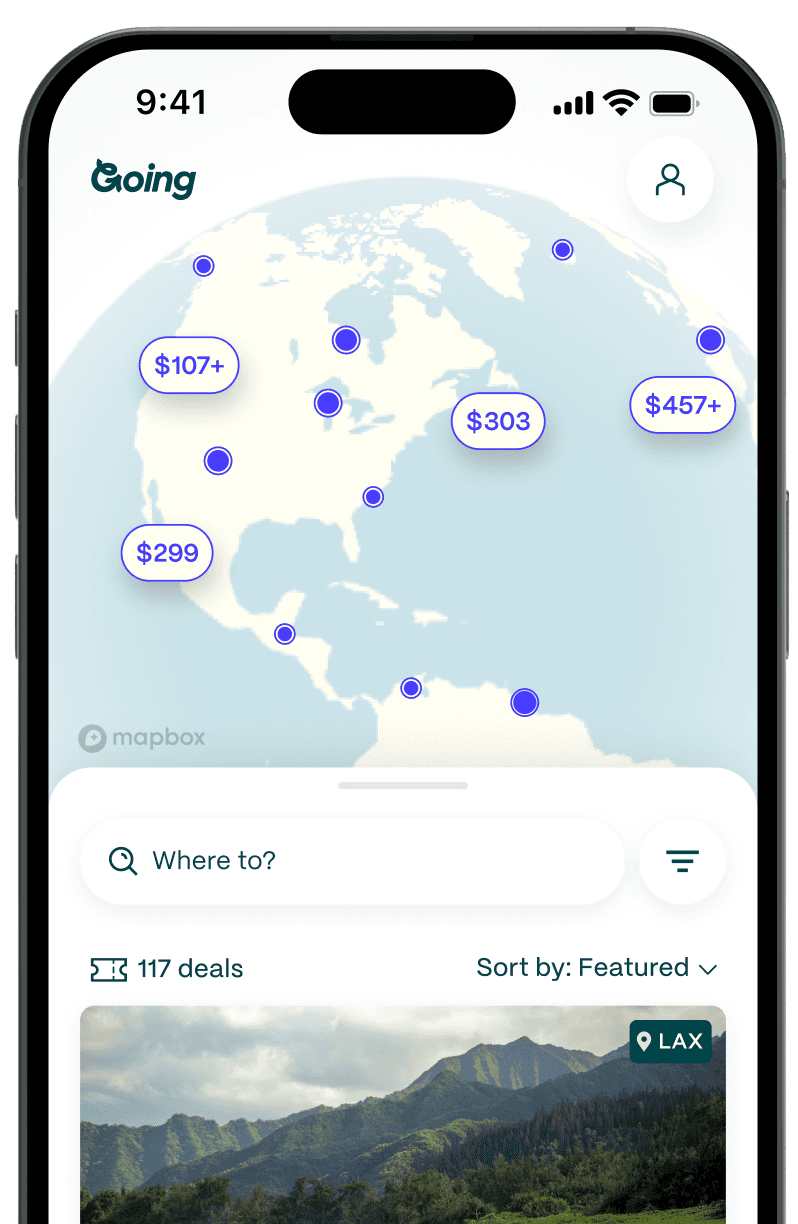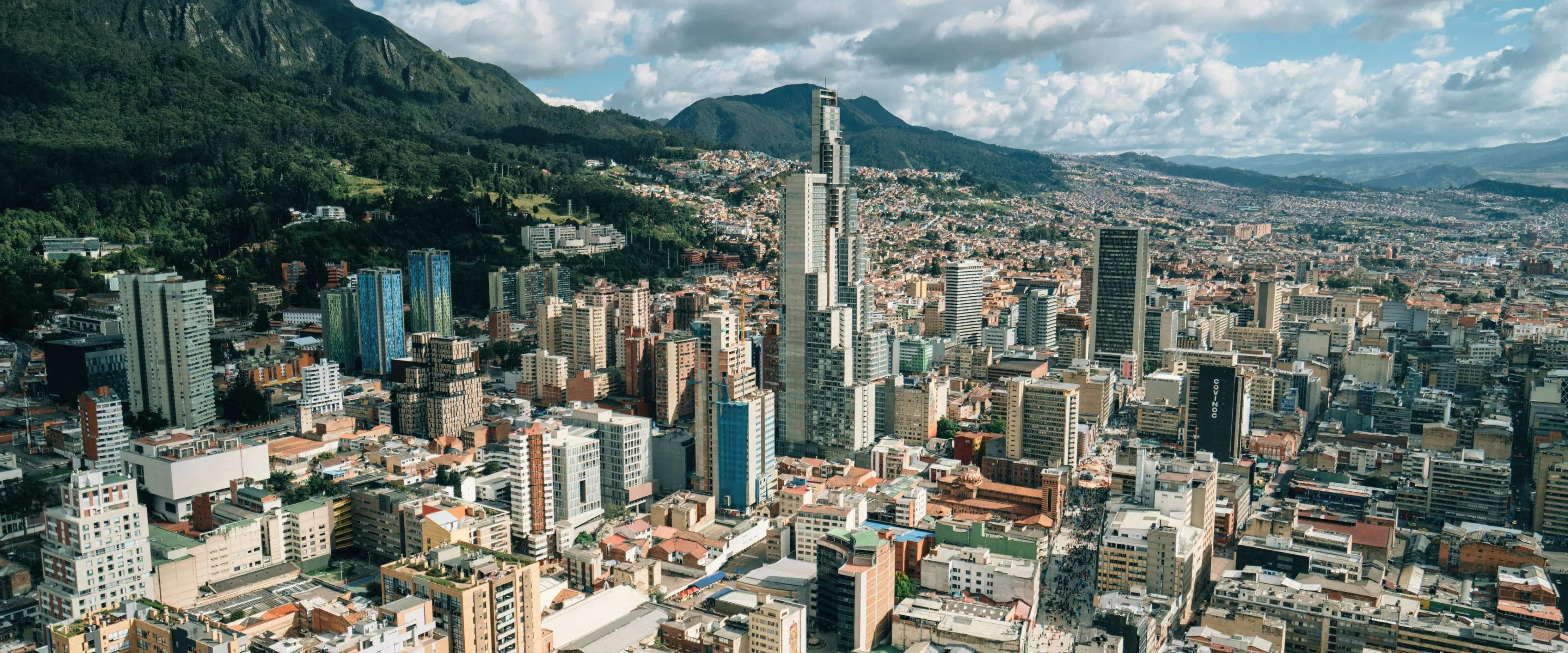
Bogotá: The South American Capital 8,600 Feet Above Sea Level
Set in the center of Colombia on a high plateau more than 8,000 feet above sea level, Bogotá is a window into the country's diversity. It is the best place to experience food, art, music, and coffee from across the country.
Although its weather might be similar to Seattle's (often gray and rainy, with temperatures rarely going below 48°F or above 78°F), this city of over 11 million is uniquely Colombian. The capital and largest city in the country, it’s a place where you can experience much of Colombia’s history, unique flavors, and culture—from museums with unique pre-Columbian gold artifacts to fusion gastronomy, amazing coffee, and a unique architectural style.
The mountains that shaped it

Around 72 million years ago, the Andes mountains formed when the Nazca and South American plates converged. The longest mountain range in the world (stretching 5,500 miles vertically across South America) has determined the history of Bogotá and Colombia ever since.
Archaeological evidence suggests that humans first settled permanently in the area around 3,000 years ago. The Spanish arrived in the region in 1537 and found culturally diverse and densely populated settlements, which they named Muiscas; it is believed the name comes from the word moxiga and loosely translates as “people that live in the mountains” in Chibcha, the Indigenous language.
Legend says that the conquistador Gonzalo Jiménez de Quesada founded the city on top of the Muisca settlements and named the new city Santa Fe de Bogotá. Through the decades after the Spanish arrived, most of the Indigenous population perished because of forced labor, war, and disease.

After Colombia gained independence in 1819, the name was changed to Bogotá as a tribute to its Indigenous past. Today, the official name of the city is Bogotá, Distrito Capital.
The rugged terrain of the Andes and Colombia's hyper-central politics for most of the country’s history made communications between the capital and other regions difficult and led to the state's absence from many regions across the country. With no state, illegal groups like drug lords or guerrilla groups effectively controlled many remote regions.
In the past two decades, many regions of Colombia have achieved relative stability, but historically Bogotá and its surroundings have been a safe haven for refugees who were forced to leave their homes because of the violence; their arrival helped the growth of the city in the second part of the 20th century.
Two great places in Bogotá to take in views of the Andes are Monserrate Sanctuary (a church built in the 17th century on top of a hill) and El Campín (the soccer stadium home to the best team, Independiente Santa Fe). When seated on the western bench, you can see the field, the city, and the magnificent mountains.
The architect of the city

Bogotá is often described as an orange city because most buildings are built with uncoated terracotta bricks, which are very cheap and robust. From slums to luxury buildings, they have been used by all builders.
During the 20th century, Rogelio Salmona, Colombia’s most famous architect, constructed iconic buildings in this style, such as the Torres del Parque (three residential towers surrounding a bullring), El Eje Ambiental (a small channel that was built with the goal to recover the stream of San Francisco), el MAMBO (Museum of Modern Art of Bogotá), and the Biblioteca Virgilio Barco (public library).
Downtown (or “El Centro”) and the Candelaria neighborhoods have many beautiful colonial houses and picturesque small streets. There are also many religious buildings, such as the 17th-century Museo Iglesia Santa Clara, which offers grandiose gold decorations inside, plus nearly 150 paintings and wood carvings.
To see a variety of the city’s architectural styles, start at the Plaza Bolivar and walk through the Carrera Séptima (Bogotá’s most important street) toward the National Museum (a former prison). Afterward, explore the neighborhood of La Macarena, which has excellent restaurants, and make sure to visit the beautiful La Plaza Santa María (a former bullfighting stadium from 1931) and the Planetarium.
If you are in Bogotá on a Sunday, you can experience ciclovía: From 6am to 2pm, some of the main streets in the city are closed to all but bikes and pedestrians.
From haute cuisine to cheesy hot chocolate

Bogotá's food scene is vibrant and eclectic. As the capital of Colombia, it offers food from all around the country and the world. Most young chefs and cooks experiment and mix styles and flavors, and there are many high-end restaurants and many more cafeterias and cheap eats.
The most traditional dish from the city is a potato soup named ajiaco (try it at Las Margaritas with their fried pork empanada and thank me later). Instead of afternoon tea, people in Bogotá enjoy hot chocolate with delicious treats. Try the oldest restaurant in the city, La Puerta Falsa, which opened in 1816 and is famous for its tamales (a dish made with corn dough and filled with meat, rice, and vegetables and wrapped in a leaf), buñuelos (fried cheese dough), and hot chocolate. And feel free to put cheese into the chocolate and dip your bread into it; it's what the locals do.
If you want a more high-end meal or some fusion, try El Chato (one of two of the city’s restaurants on the World’s 50 Best Restaurants list), Salvo Patria, Cafe Bar Universal, or Qmare, the only place I know of in Bogotá that serves food from the Amazon rainforest. If you want to eat like a local, check out one of the many Crepes & Waffles. The most trusted franchise in the country, it’s the Colombian version of a diner with hundreds of savory and sweet dishes.
Museums for all

Bogotá is among the best museum cities in the world. With 40+ museums, there is something for everyone, and they all offer unique exhibits at a very reasonable price (some are even free).
El Museo del Oro (the Gold Museum) displays a unique collection of Indigenous art and cultural artifacts. There are truly remarkable pieces like a gold conch shell, and the exhibits do a great job of explaining how gold objects were made and their cultural significance. It's also among the best places to learn about Colombia's Indigenous past and present, and it has a small but mighty museum store.
Other excellent museums include Colección Botero, an art collection donated by the great painter and sculptor to Colombia that features works by Picasso, Dalí, and others, plus hundreds of pieces from Botero himself; the Museo Miguel Urritia, which has many exhibits on the history of art in Colombia; and the Museo Nacional, which offers excellent interactive exhibits for kids. And if your thing is contemporary art, try MAMBO or visit the neighborhood of San Felipe, which is home to many art galleries such as SGR, Elvira Moreno, and Estudio 74.
Another must-visit is Fragmentos, an exhibit space that came into existence after the 2016 peace accord between the government and FARC (Revolutionary Armed Forces of Colombia, the largest and oldest guerilla group on the continent). The building was designed by architect Carlos Granada, and the concept for the space was conceived by visual artist and sculptor Doris Salcedo (who made a crack in the floor of London’s Tate Modern museum). She worked with female victims of the decades-long civil conflict to make the floor of the building using melted guns as a form of therapy. It's beautiful and haunting—a necessary space for the remembrance of a violent past.
To market, to market

Day markets are among the best things you can do in Colombia. You can try all kinds of new fruits or buy toys, clothes, your own kit to make hot chocolate at home, meats, freshly caught fish, and even love potions (not kidding!). These markets open every day at the crack of dawn; if you are an early riser, you can get fresh flowers every morning; they are usually sold out by 7am. Farmers from all over the region sell their products in these markets, and their clientele includes locals and many restaurants.
Among the best are: Paloquemao (the biggest one), 7 de Agosto (next to a neighborhood with many leather shops), and La Perseverancia (it has a whole restaurant section). However, be aware that people are working and doing their grocery shopping, so be careful not to be disruptive. Have fun, eat well, buy food, and don’t do anything different from what you would do at your local Whole Foods or Trader Joe's.
The night scene

A friend once told me that gringos travel to Colombia expecting crazy parties and instead find a lot of people who want to hang out and talk about their grandmothers. There are great places to dance that are open most days of the week, but Bogotá is not known as a party town. During the week, most locals go out to dinner or for a movie night. Cinema Paraiso offers a great film selection and a bar.
Most weekends there will be parties. College students usually go to La Zona Rosa or la ‘T´ for trendy clubs and cocktail bars. However, the best parties in Bogotá are always at someone's home. A unique social event is the “asado,” a term used in Latin America both for cooking barbecued meats and also for the social gathering around eating those meats. It will usually start in the afternoon, and food and drinks will be served deep into the night.
That being said, there are great opportunities to experience the city’s nightlife, from electronic music clubs (O.D.E.M.) to salsa dancing (El Goce Pagano or Sandunguera) and pubs (BBC—Bogotá Beer Company). The best place for a night out is Andres Carne de Res. The original is outside Bogotá in the town of Chia, and it's very much worth visiting, but there is a second location in the mall El Retiro. It’s a bit like TGI Fridays on steroids—but actually very cool and very popular with locals. There is fantastic food, dancing, music, and cocktails served in bowls. Plus, international visitors get a special treat (I won’t spoil the surprise; just say to the host you are an international visitor).
Salt mines, sacred craters, and animal encounters

The montane savanna (high mountain savanna ecosystem) of Bogotá offers many activities, and you can easily book a tour or hire independent drivers for a day to help you get around.
The Salt Cathedral of Zipaquirá is a cathedral built 660 feet below ground in salt mines that had been in use by Indigenous people for centuries. The old mines are combined with sculpture and lighting to make a unique experience. There’s also the Laguna of Guatavita, a small crater lagoon that was sacred for the Muisca. The first Spanish conquistadores described a sacred ceremony where the Muisca would offer gold to the lagoon, which has led many treasure hunters to seek artifacts in and around the lagoon.
Finally, there is Chingaza, a national park at high altitude (up to 13,000 feet above sea level) in the tropical Andes. It’s home to a unique ecosystem that includes giant rosette plants, shrubs, and grasses called páramo, as well as endemic birds such as the blue-bearded helmetcrest (a hummingbird with a beard), white-tailed deer, and spectacled bears.
A coffee revolution

Colombia is known across the world for its high-quality coffee. However, for most of my life, I, like many Colombians, only drank pretty crappy strong coffee (nicknamed tinto) as most of our good coffee was exported. However, during the past few years, many coffee lovers, baristas, and entrepreneurs have worked to ensure Colombians drink high-quality coffee and learn about it. Bogotá is not in the coffee-growing region (it's too rainy and has too high an altitude for the plant to thrive), but as the capital, it is one of the best places to try and buy good coffee.
Café San Alberto is a family-owned company that offers single-origin coffee from their plantation. Try their cafe in Usaquen, a quaint neighborhood that used to be a small town but got swallowed by Bogotá as the city expanded. They will walk you through the best preparations and how to sample it. Azahar Café 93 is another excellent option for trying different boutique coffees. From either location, you can buy local fair-trade coffee, or try the Tienda de la Empatía in Usaquen (Empathy Store), which sells products directly from different communities across the country.
Good to know
Is Bogotá expensive?
Bogotá, like the rest of Colombia, offers opportunities to travelers of all budgets. The Colombian peso has lost much value in the past few years compared to the dollar. A three-star hotel will range from $150–$200 per night. Many Airbnbs are available for around $60 per night, and hostels are available for $25 per night.
Most restaurant meals cost $30–$50, while street foods cost $2–$5. You should pay at most $50 for any activity.
Also, be very mindful of the conversion rate. Colombia uses hundreds and thousands of pesos, which can confuse first-time travelers. A good rule of thumb is that 4,000 pesos equals more or less 1 dollar.
Best time to visit Bogotá
The best times to visit Bogotá are from January–February and May–October. Bogotá has very similar weather all year, though it tends to be more rainy during April and November. Avoid Easter week, July, and Christmas, as they are the high seasons in the country, and hotels and airfare are significantly more expensive, and all tourist destinations will be very crowded.
What languages are spoken in Bogotá?
The main language spoken in Bogotá is Spanish. Most people also speak basic English. Most restaurants, tourist spots, and bars will have English-speaking staff. In the small towns around Bogotá, it is much harder to find English speakers.
Bogotá with kids
Bogotá isn’t known as a top family destination. Still, there are plenty of activities for families with kids, from feeding pigeons at Plaza Bolivar to the planetarium and the kids' room in the Museo del Oro. Also, kids get free entrance during family day at soccer matches at El Campín.
Bogotá public transportation
Bogotá's public transportation is based on TransMilenio and buses with dedicated lanes. It works great during the day (but is best avoided at night) and beats the city's heavy traffic. It will be very cheap if you prefer taxis or Uber; always use an app.
Is Bogotá safe?
Colombia ranks #140 out of 163, according to Vision of Humanity’s Global Peace Index. Colombia's security has improved dramatically in the past few years despite some setbacks around rural counties. Downtown Bogotá and neighborhoods in the north of the city are very safe. Just use common sense precautions.
Colombia also ranks #24 with a score of 75/100 for LGBTQ+ equality, according to Equaldex's LGBT Equality Index. Bogotá is very friendly to the LGBTQ+ community (the former mayor was the first woman elected to the office as a member of the LGBTQ+ community on the continent). Keep in mind that Catholicism is widespread across the city and country, and some LGBTQ+ folks may experience hostility when traveling throughout the country (especially in small towns).
Getting to Bogotá
- Main airport: BOG
- Average Going deal price for cheap flights to Bogotá: $323 roundtrip
More South American destinations:
Last updated August 30, 2024
